GEOL 20 sedimentary rocks + minerals quiz edited
1/22
There's no tags or description
Looks like no tags are added yet.
Name | Mastery | Learn | Test | Matching | Spaced |
|---|
No study sessions yet.
23 Terms

CLASTIC/DETRITAL
GRAIN:
size— <1/256mm, shape— very fine, sorting— well-sorted
HCI: NO reaction
ENVIRONMENT: continental to marine
CEMENT: calcite
POROUS: yes
MINERAL(S): mostly clay, quartz, feldspars
OTHER: splits easily, feels chalky-to-smooth
Shale (mudstone)
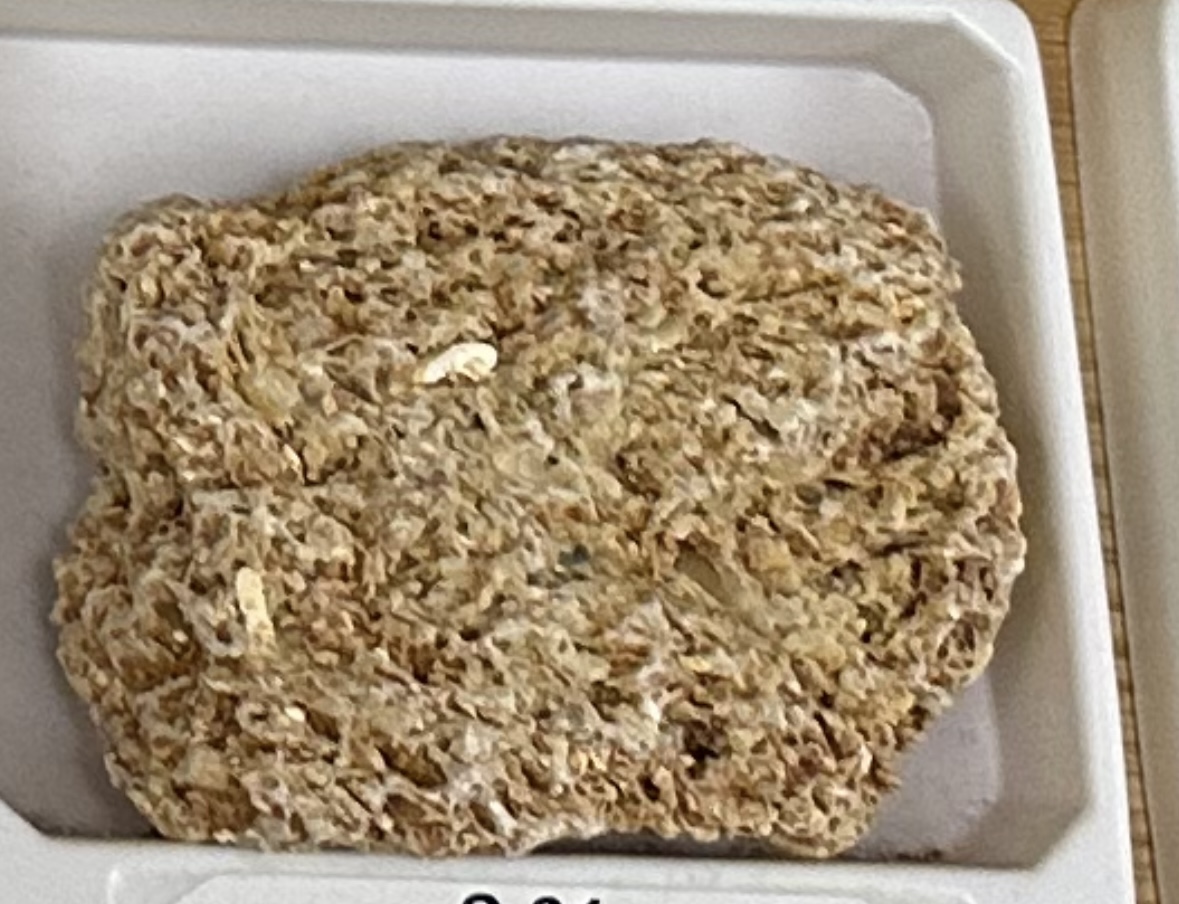
CHEMICAL/BIOCHEM
GRAIN:
size— 1 - 4mm, shape— “chunky”, granola-like, sorting— poorly-sorted
HCI: reaction
CEMENT: calcite
POROUS: yes
MINERAL(S): calcium (shell fragments)
ENVIRONMENT: marine (shallow reef)
OTHER: looks like oats, made almost entirely of shell fragments
Coquina (shells)
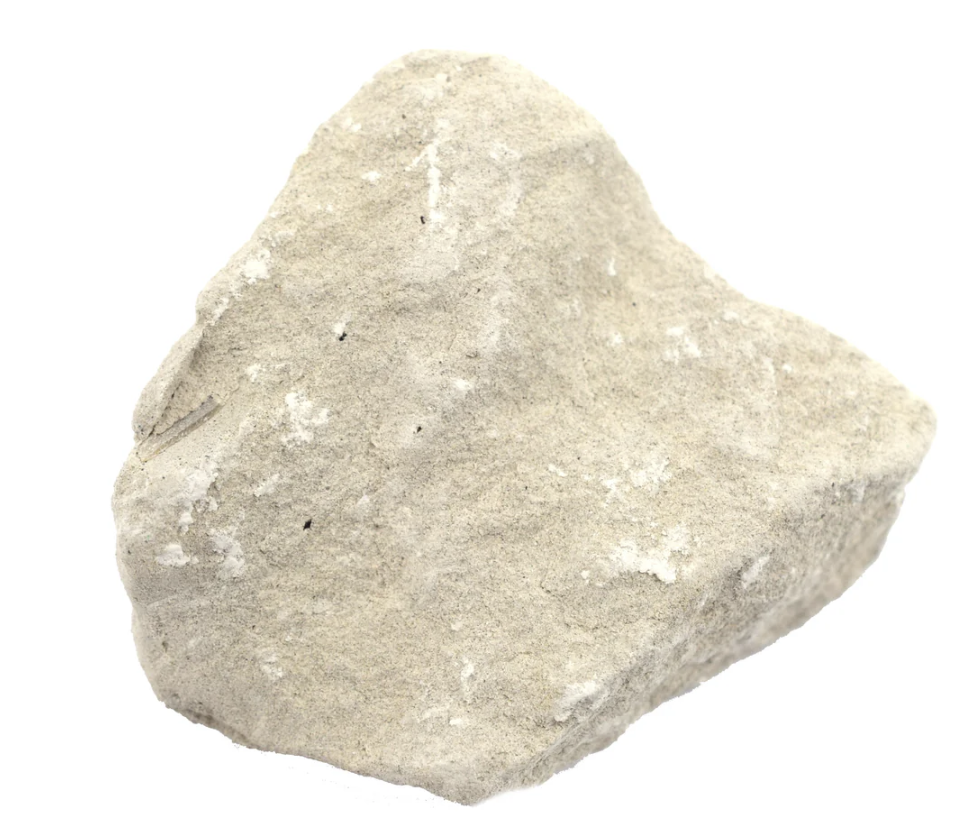
CHEMICAL/BIOCHEM
GRAIN:
size— ranges from 1/16 - 2mm, shape— very fine to very coarse, sorting— well-sorted
ENVIRONMENT: continental to intermediate marine
HCI: reaction
CEMENT: well-cemented, “coarsely crystalline”
POROUS: no
MINERAL(S): calcium carbonate
OTHER: waxy
Limestone

CLASITIC/DETRITAL
GRAIN:
size— 1/16mm - 2mm, shape— coarse angular grains, sorting— poorly-sorted
HCI: reaction
ENVIRONMENT: continental (alluvial fan)
CEMENT: calcite
POROUS: yes
MINERAL(S): quartz, feldspar, rock and/or clay
OTHER: feels gritty or sandy, variable grain size
Arkose (feldspar sandstone)
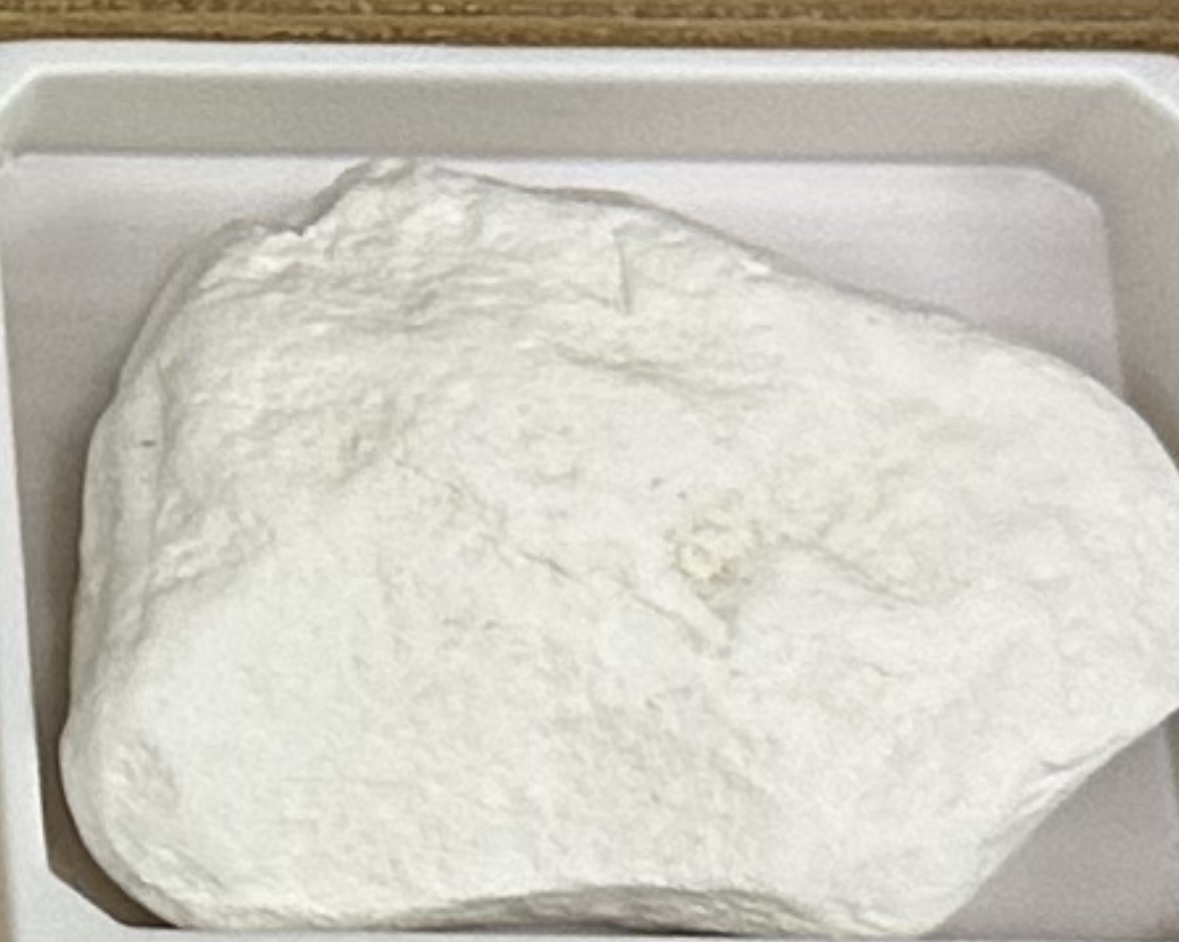
CHEMICAL/BIOCHEM
GRAIN:
size— <1/256mm - 1/8mm, shape— very fine, sorting— well-sorted
HCI: reaction
ENVIRONMENT: intermediate marine (continental slope/rise)
CEMENT: poorly-cemented by calcite
POROUS: yes
MINERAL(S): calcium, clay minerals
ENVIRONMENT: intermediate marine (continental slope/rise)
OTHER: very soft and light earthy rock, white to light brown
Chalk (soft, important)

CHEMICAL/BIOCHEM
GRAIN:
size— micro-crystalline, shape— conchoidal fracture, sorting— well-sorted
HCI: NO reaction’
ENVIRONMENT: deep marine (abyssal plain)
CEMENT: silica
POROUS: low
MINERAL(S): quartz, chalcedony, flint, opal, etc.
OTHER: scratches glass, hard and waxy feel
Chert (scratches glass! important)
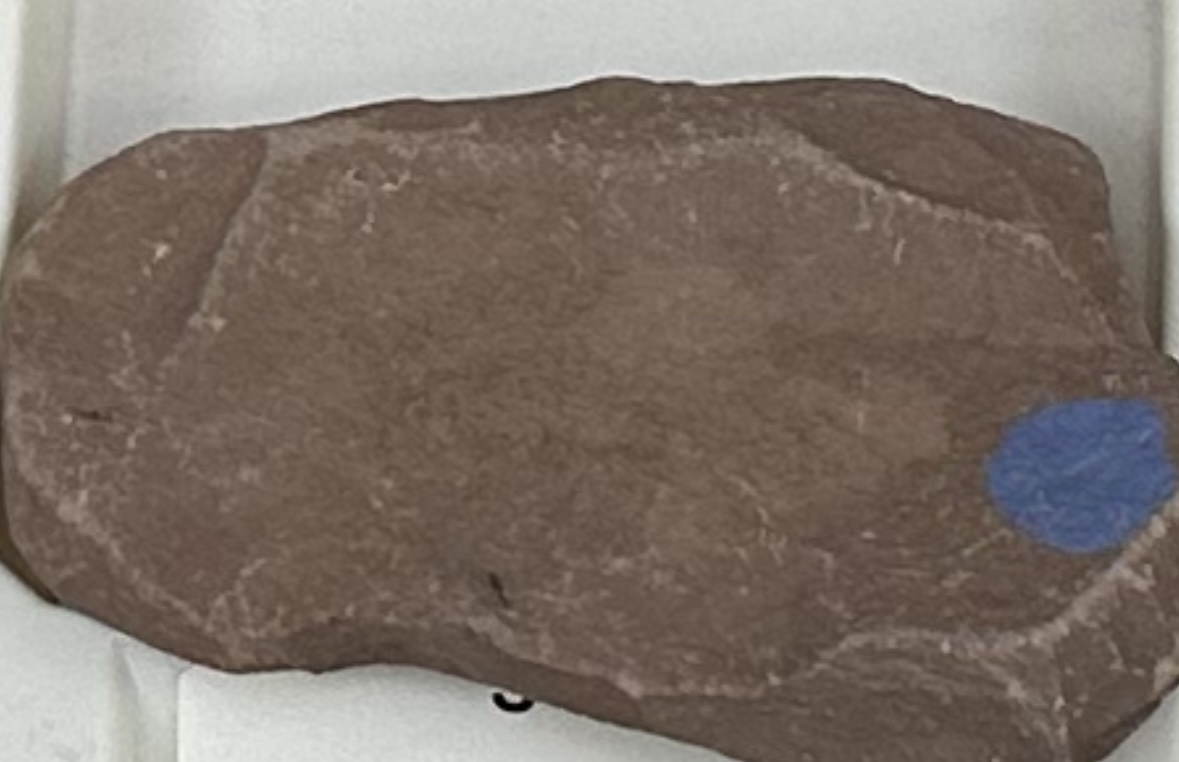
CLASTIC/DETRITAL
GRAIN:
size— 1/256mm - 1/16mm, shape— very fine, sorting— well-sorted
HCI: likely reaction
ENVIRONMENT: continental (lake) to marine (continental slope/rise)
CEMENT: calcite
POROUS: low
MINERAL(S): quartz, feldspar, rock and/or clay fragments
OTHER: feels chalky, does not split along layers (non-fissile)
Siltstone (reminds me of rhyolite +HCl)
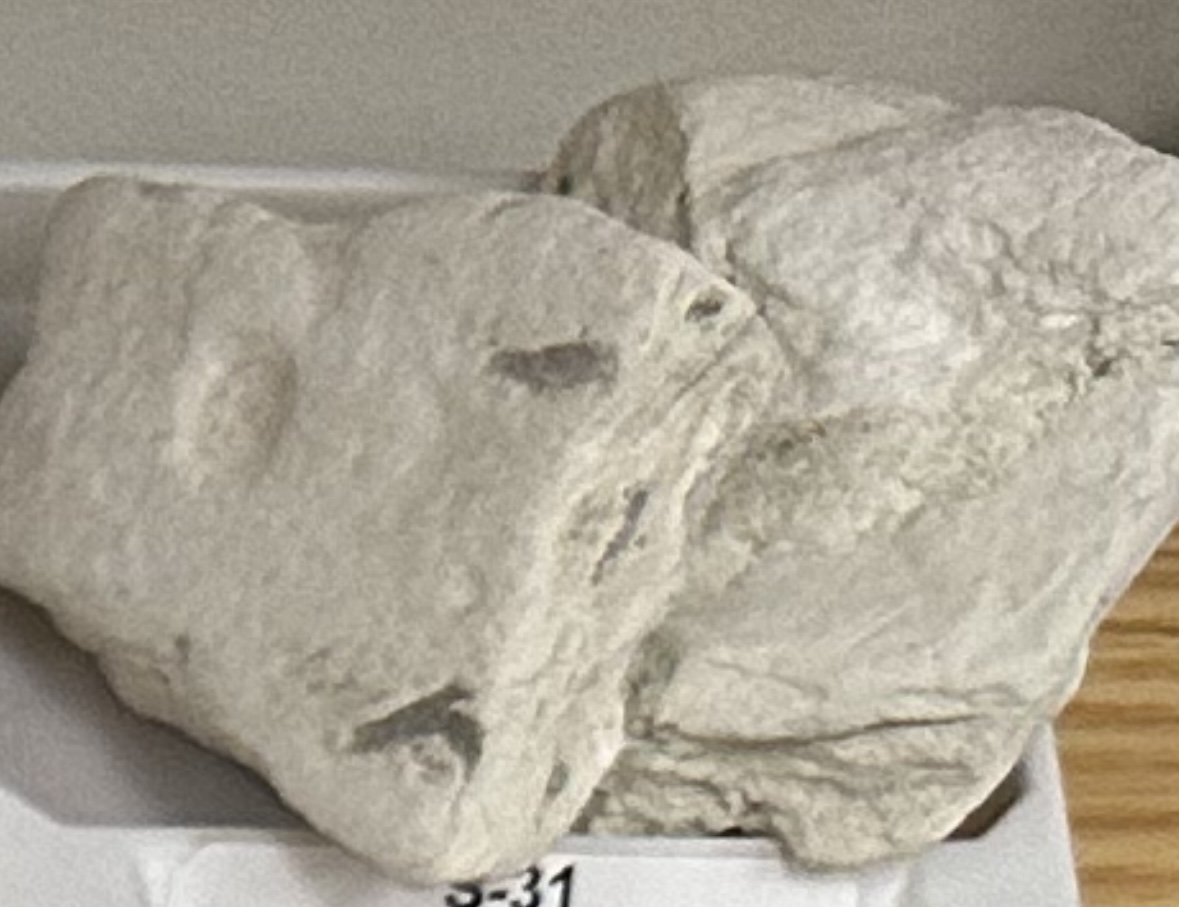
CHEMICAL/BIOCHEM
GRAIN:
size— <1/256mm - 1mm, shape— very fine, sorting— poorly-sorted
HCI: NO reaction CEMENT: poorly-cemented POROUS: yes
ENVIRONMENT: deep marine (abyssal plain)
MINERAL(S): fossilized diatoms, quartz, chalcedony, flint, opal, etc.
OTHER: very soft and light earthy rock, white to light brown, similar to chalk
Diatomite (no HCl reaction! white like chalk)
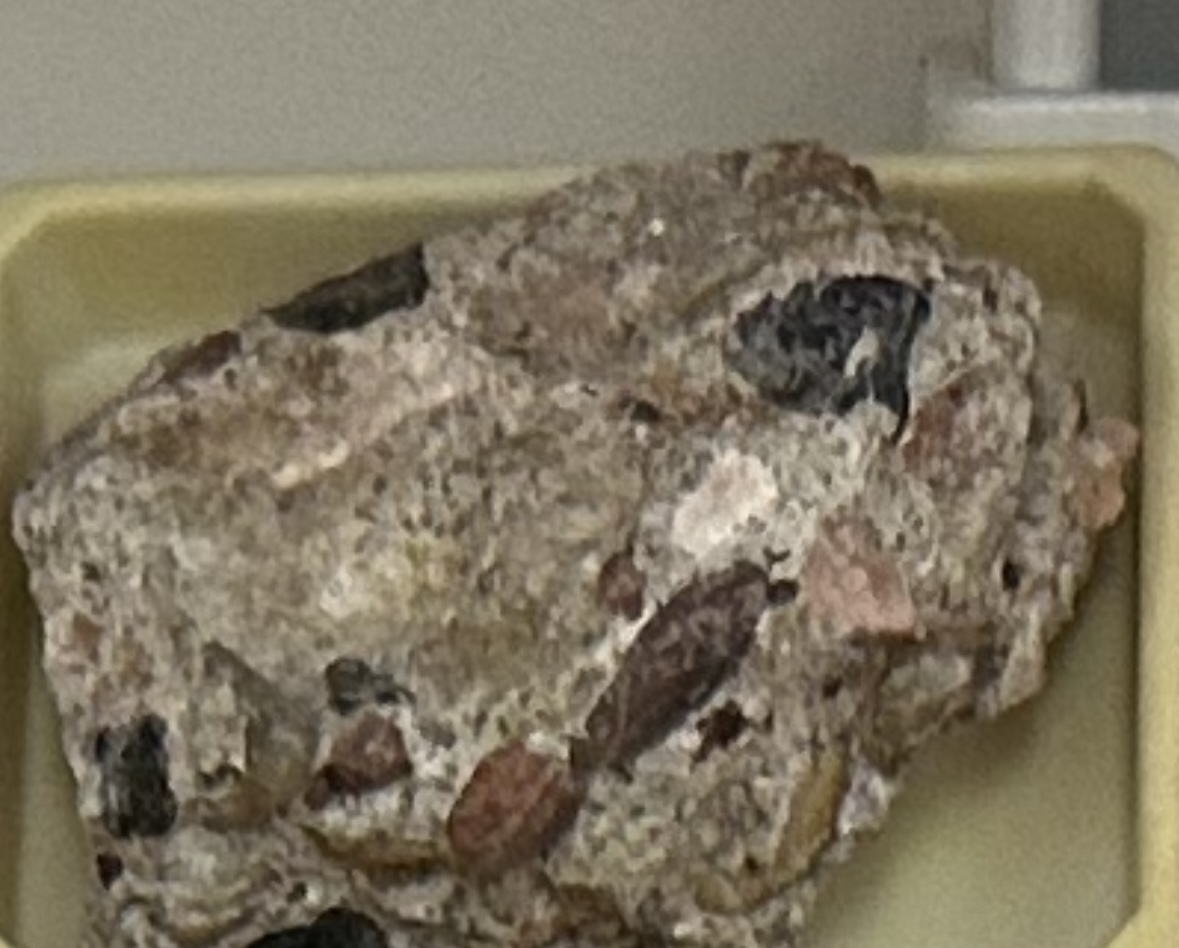
CLASTIC/DETRITAL
GRAIN:
size— >2mm gravel, shape— rounded grains, sorting— poorly-sorted
HCI: reaction
ENVIRONMENT: continental (river/stream channel)
CEMENT: calcite
POROUS: yes
MINERAL(S): quartz, feldspar, rock and/or clay minerals
OTHER: very chunky, generally poorly sorted fragments
Conglomerate (massive gravel pieces)
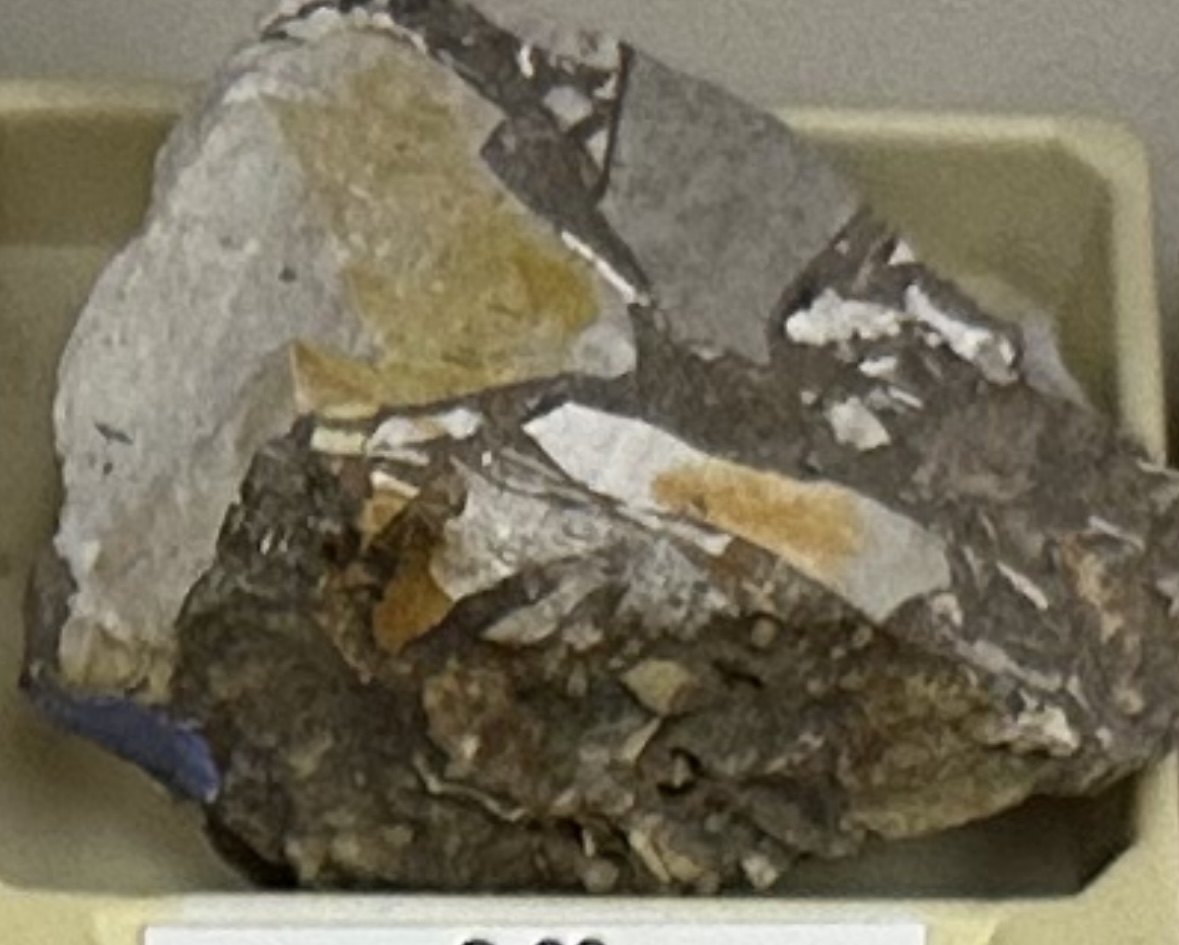
CLASTIC/DETRITAL
GRAIN:
size— >2mm, shape— angular grains, sorting— poorly-sorted
HCI: NO reaction
ENVIRONMENT: continental (alluvial fan)
CEMENT: calcite
POROUS: yes
MINERAL(S): quartz, feldspar, rock and/or clay minerals
OTHER: very chunky like conglomerate but sharper/more angular, generally poorly sorted fragments
Breccia (sharper than conglomerate)

CLASTIC/DETRITAL
GRAIN:
size— 1/16mm - 2mm, shape— gritty/sandy, sorting— well-sorted
HCI: NO reaction
CEMENT: quartz
ENVIRONMENT: continental (river/stream channel)
POROUS: yes
MINERAL(S): quartz, feldspar, rock and/or clay fragments
OTHER: asymmetrical ripplemarks
Quartz sandstone (very smoooooooth)

CHEMICAL/BIOCHEM:
GRAIN:
size— crystalline to micro-crystalline, shape— coarse fossils, sorting— poorly-sorted
ENVIRONMENT: marine (shallow reef)
HCI: reaction
CEMENT: well-cemented
POROUS: yes
MINERAL(S): calcite
OTHER: fossils present
Fossliferous limestone (looks like shells kinda, reef environ)
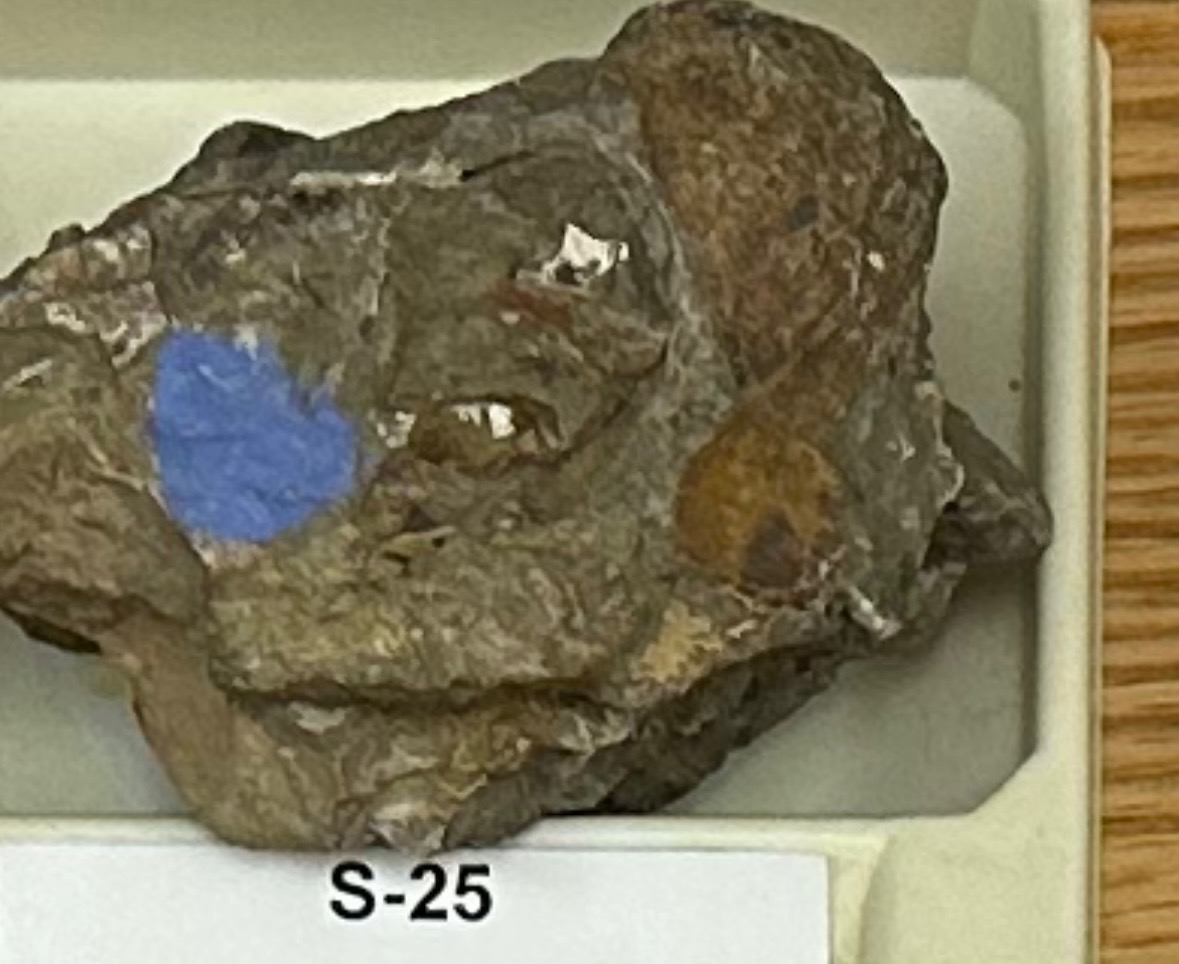
CLASTIC/DETRITAL:
GRAIN:
size— 1/16mm - 2mm, shape— gritty/sandy, sorting— poorly-sorted
ENVIRONMENT: marine (shallow inner shelf)
HCI: reaction
CEMENT: well-cemented, calcite
POROUS: yes
MINERAL(S): quartz, feldspar, rock and/or clay minerals
OTHER: fossils present
Fossiliferous sandstone
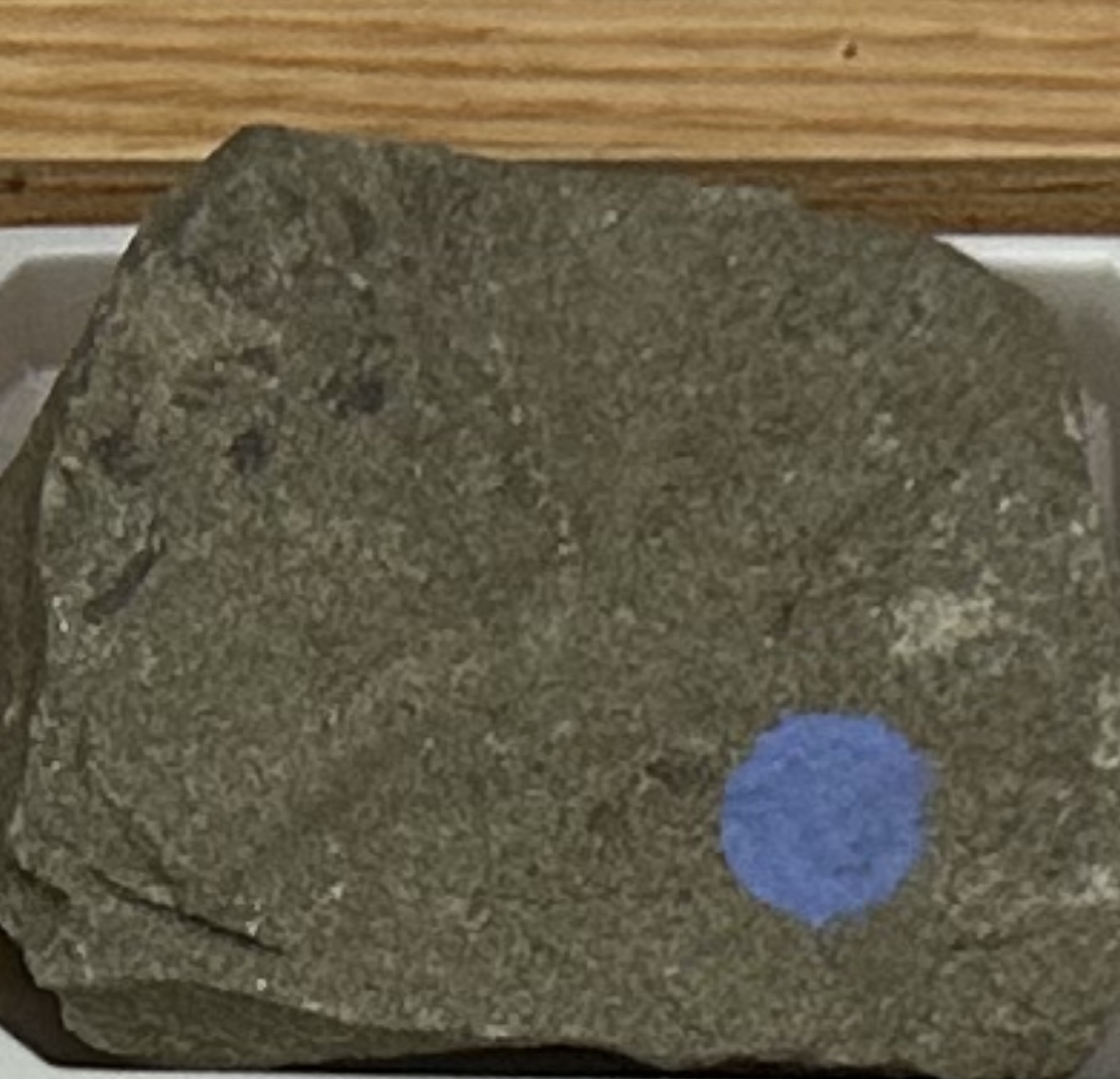
CLASTIC/DETRITAL:
GRAIN:
size— 1/16mm - 2mm, shape— uniform grain, sorting— poorly-sorted
ENVIRONMENT: marine (continental slope/rise)
HCI: possibly
CEMENT: well-cemented
POROUS: low
MINERAL(S): quartz, feldspar, rock and/or clay minerals
OTHER: angular grains
Graywacke
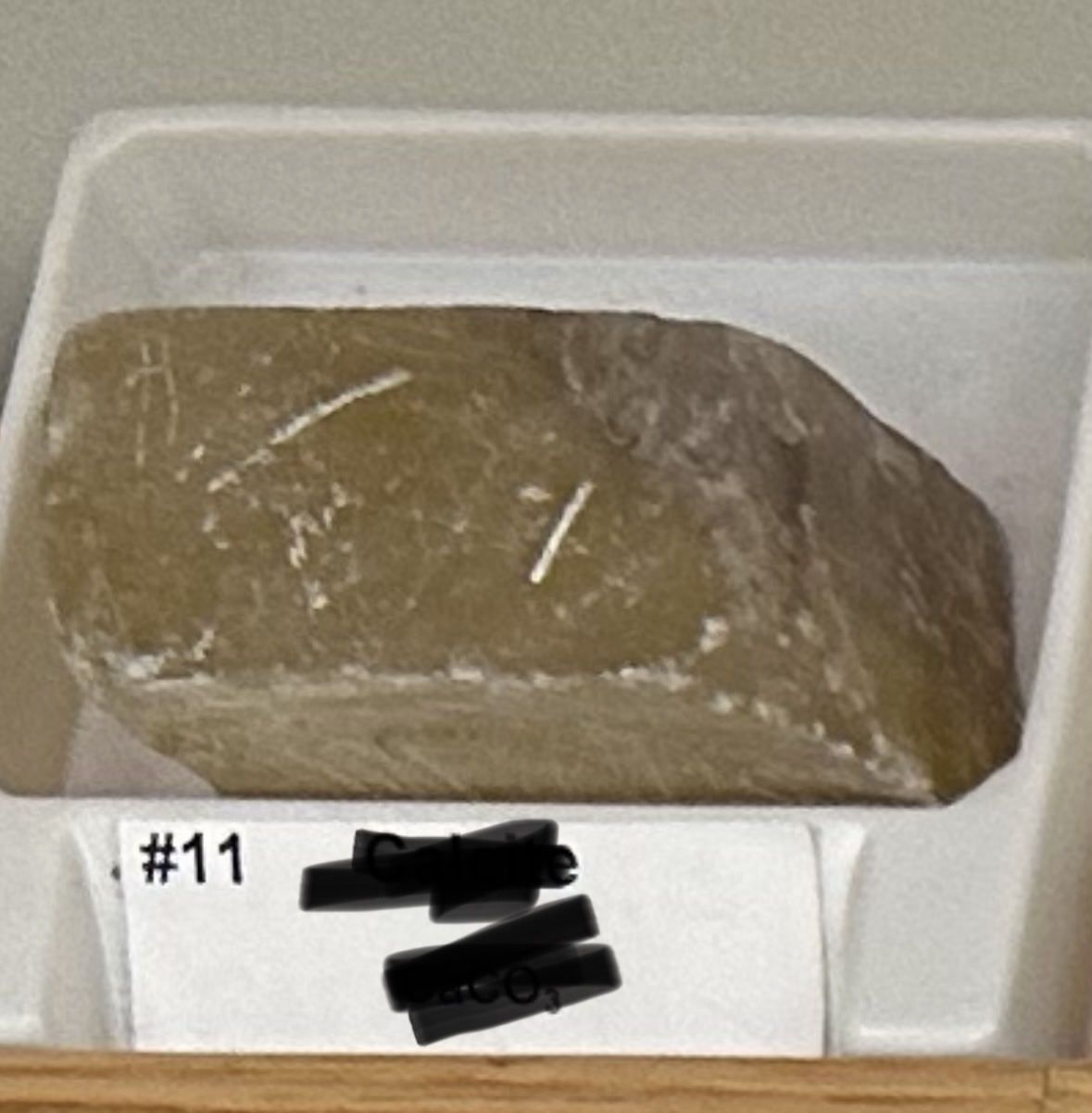
Formula: CaCO₃
Color: Typically colorless or creamy white - may have shades of brownish colors
Solubility: Soluble in dilute acids
Category: Carbonate mineral
Cleavage: Perfect on, three directions with angle of 74° 55'
calcite
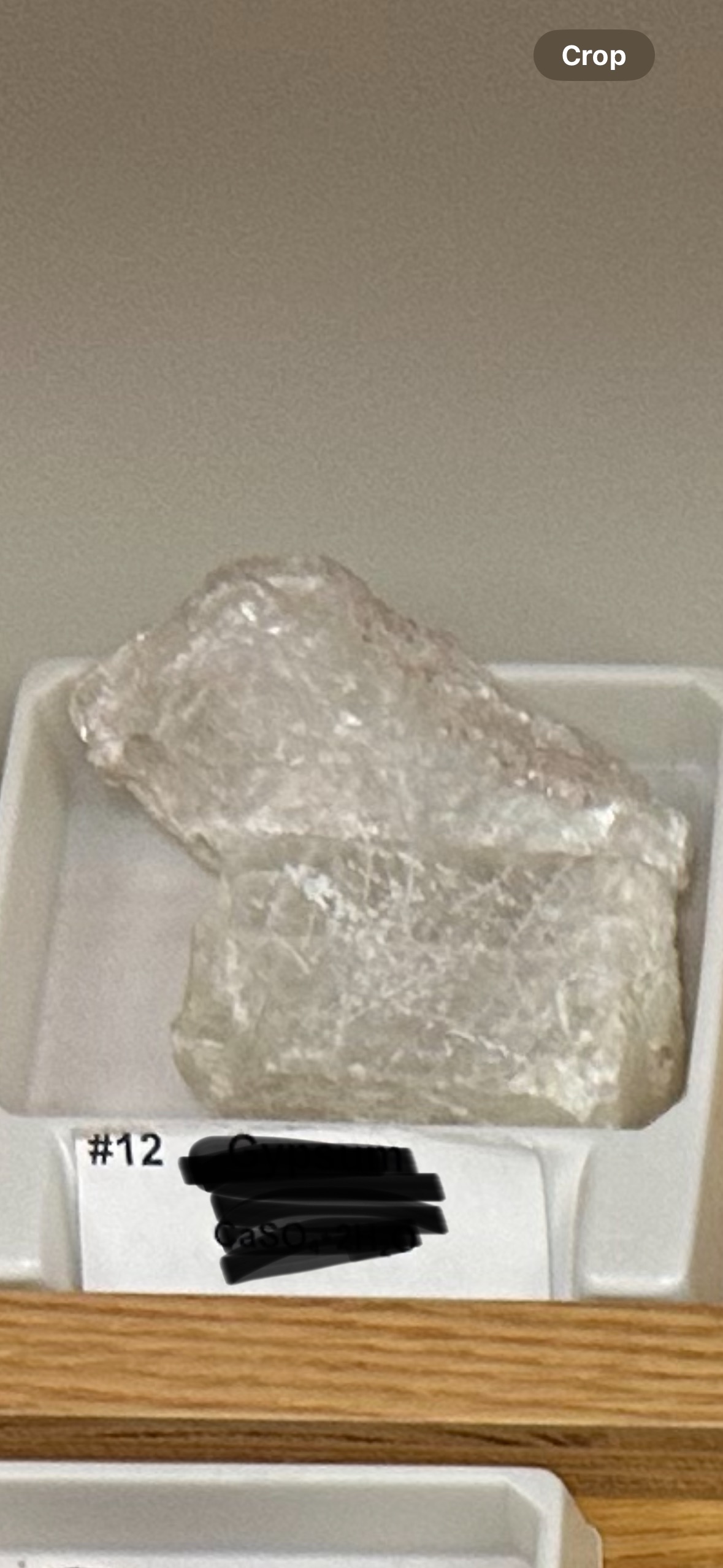
Alabaster: Fine-grained, slightly colored
Category: Sulfate minerals
Formula: CaSO4·2H2O
Fracture: Conchoidal fracture, splintery parallel
Luster: Vitreous to silky, pearly, or waxy
gypsum
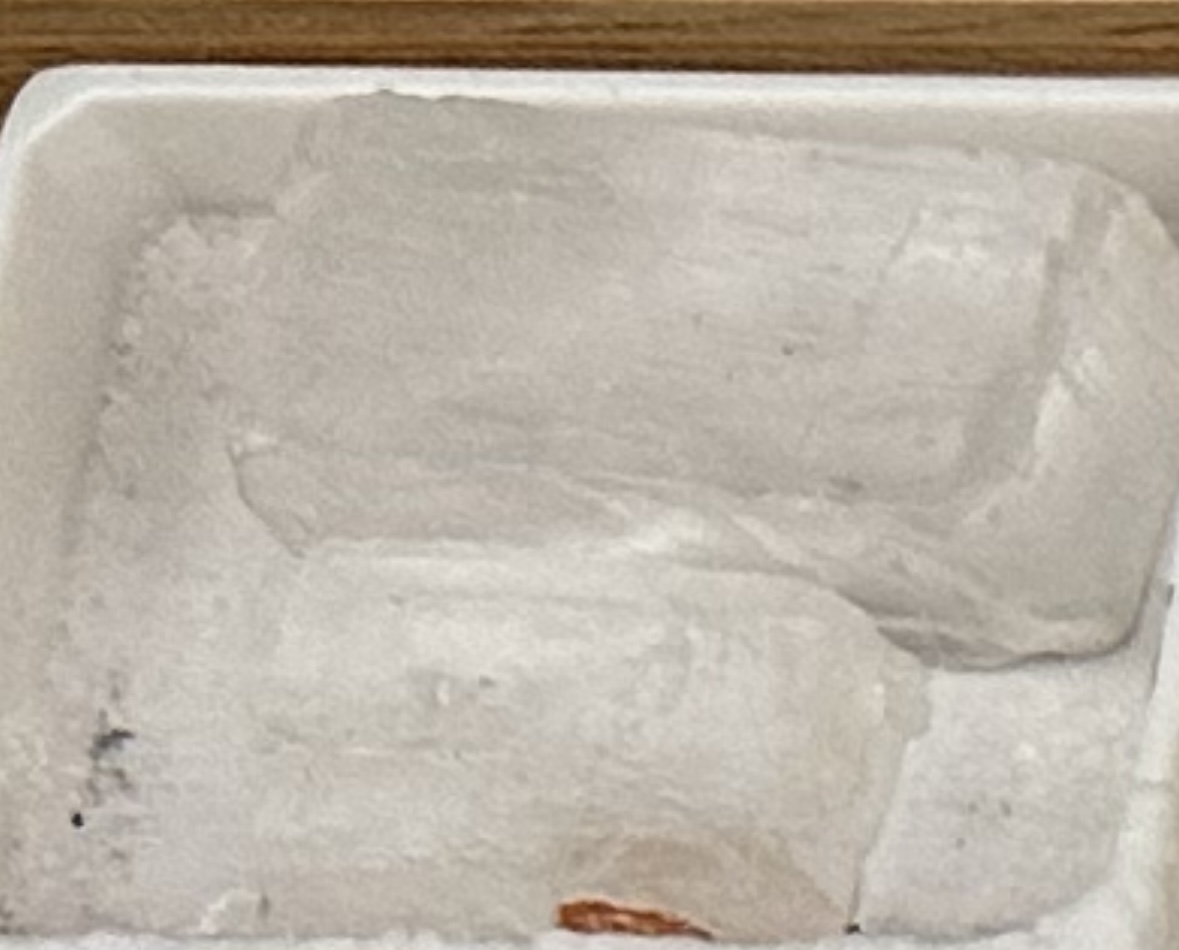
Cleavage: Perfect, three directions cubic
Crystal habit: Predominantly cubes and in massive sedimentary beds, but also granular, fibrous and compact
Crystal system: Cubic
Formula: NaCl
Fracture: Conchoidal
Luster: Vitreous
Halite (see thru ish)
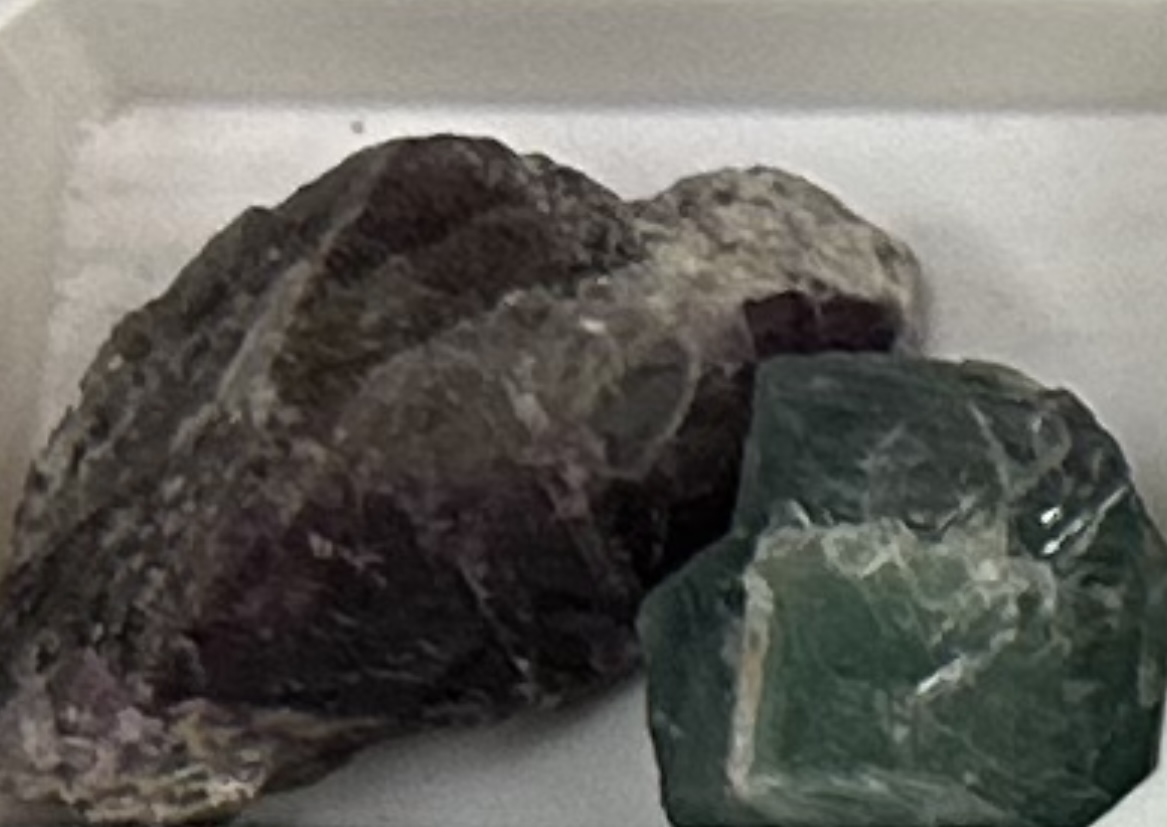
Colors: Green, Blue, Purple, Black, Pink, Yellow, Red, White, Orange, Brown
Chemical formula: CaF₂
Hardness (Mohs hardness scale): ≥ 4
Luster: Vitreous
Refractive index: ≥ 0.434
Transparency: Transparent, Translucent
Cleavage: Octahedral, perfect on, parting on
Fluorite (colors + octahedral!!)

Colors: Blue, Green, Red, White, Black, Pink, Yellow, Purple, Orange, Grey, Brown
Hardness (Mohs hardness scale): 6.5 – 7
Chemical formula: SiO₂
Luster: Vitreous, Waxy
Category: Tectosilicate minerals, quartz group
Cleavage: Absent
Chalcedony (no cleavage, hard, almost waxy)
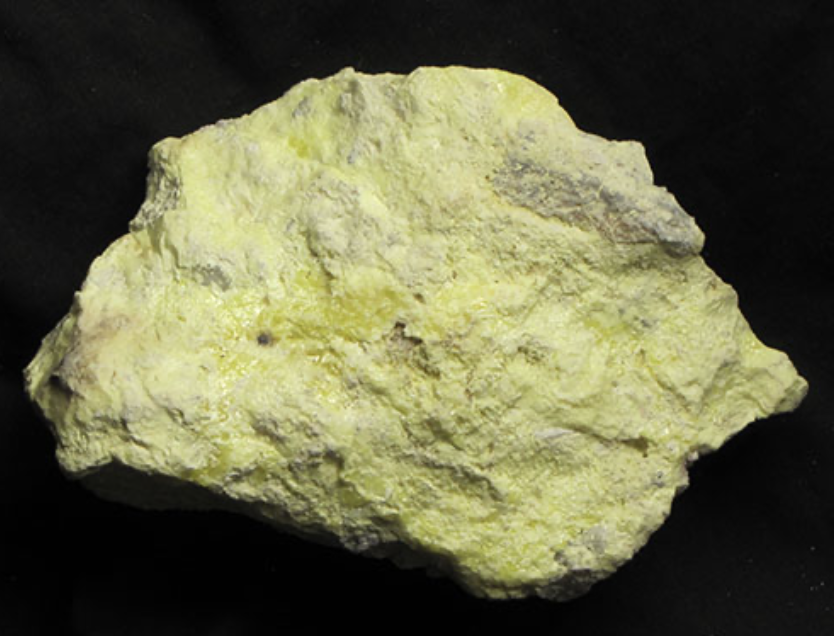
Sulfur
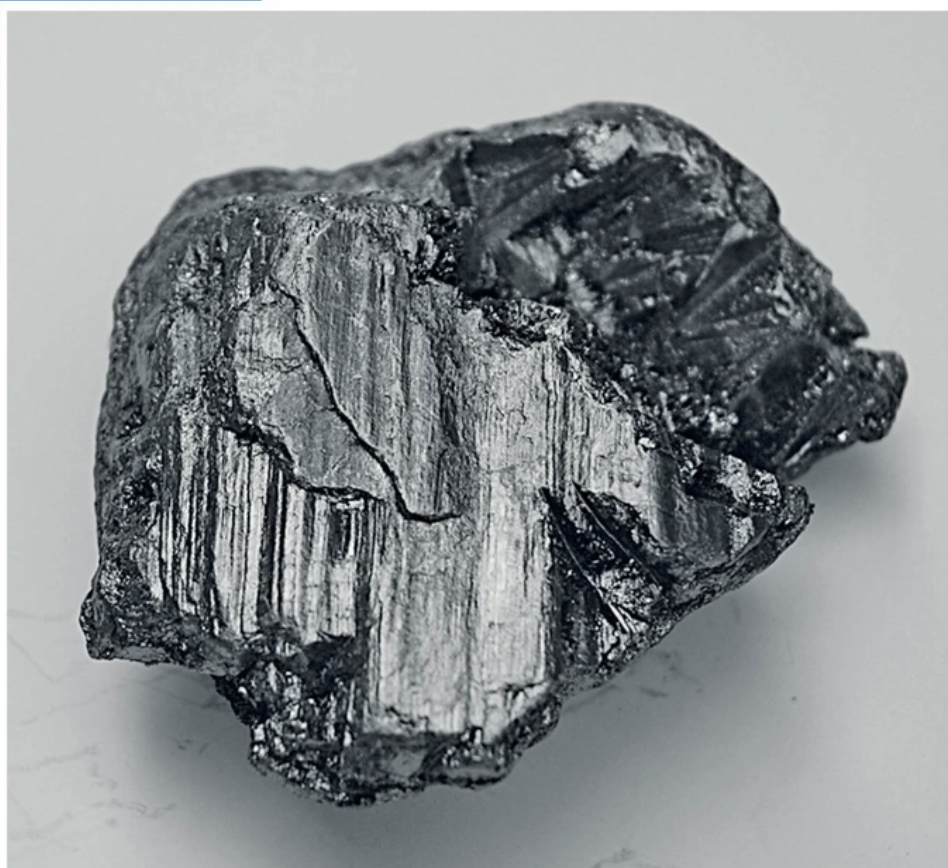
Graphite
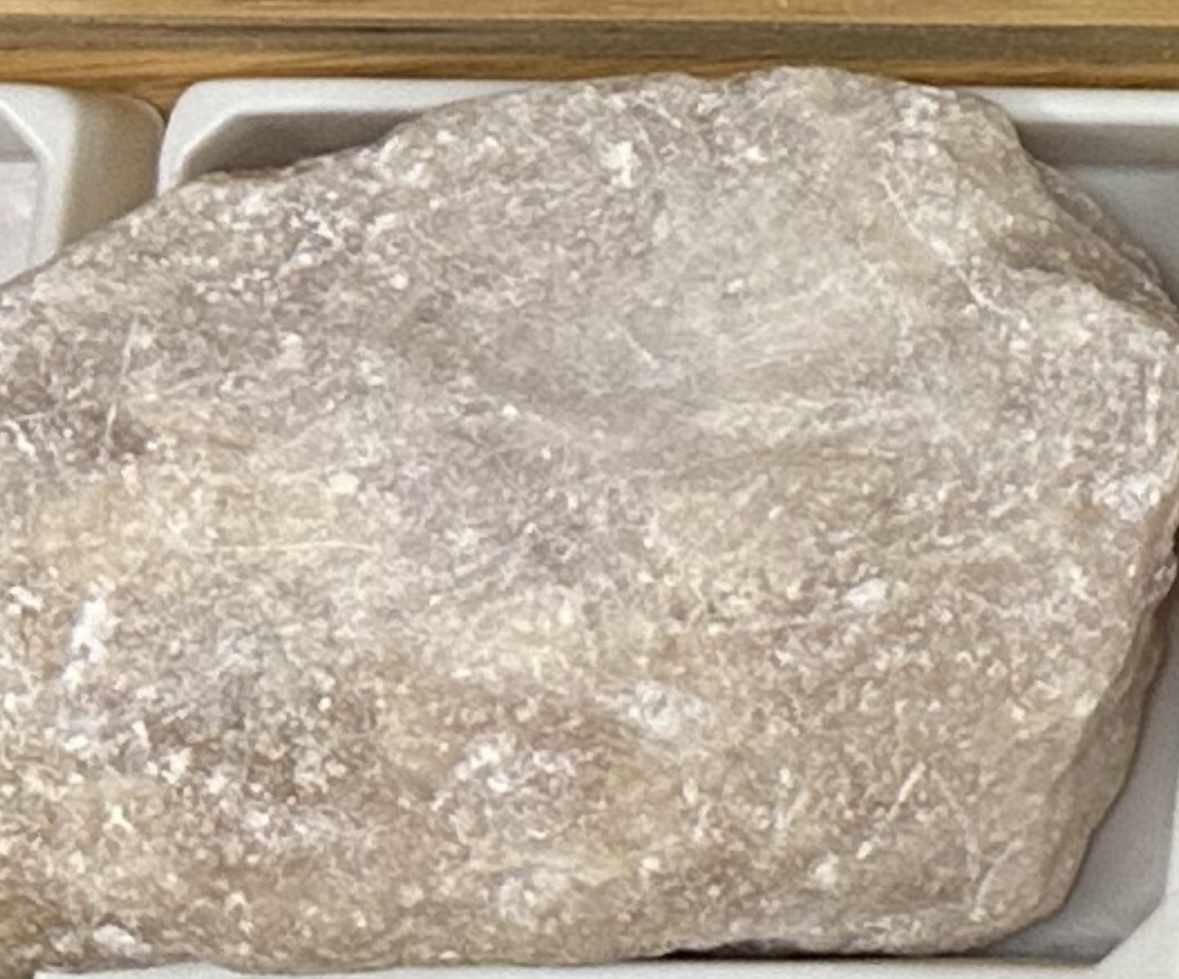
Hardness: less than 1! very soft
Vitreous and waxy looking
Talc
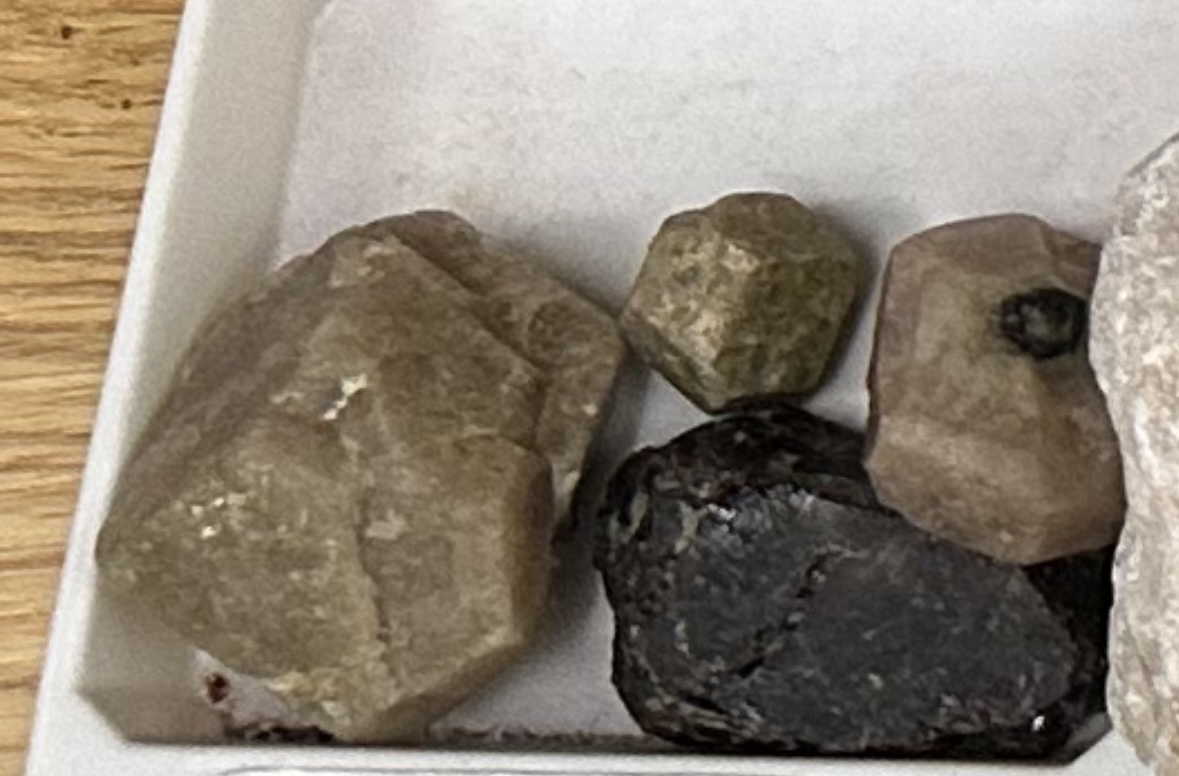
Hardness: 6.5-7ish
Cleavage: Indistinct
Color: virtually all colors, blue is rare, known for reds
Crystal system: Isometric
Fracture: conchoidal to uneven
Cleavages: Dodecahedral cleavages
Garnet